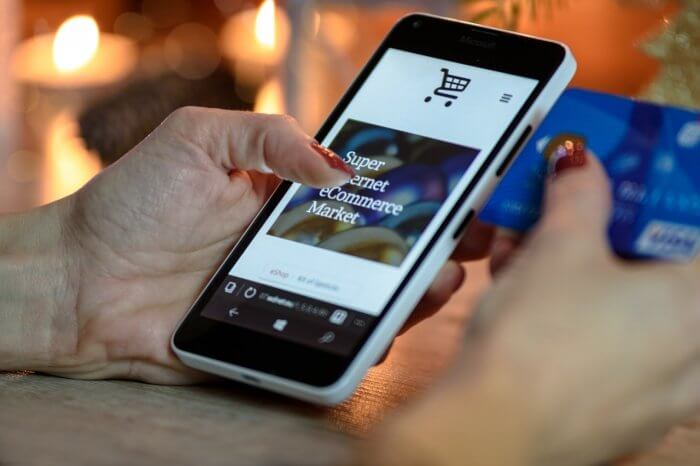
The advent of the Internet has enabled the rise of smart shoppers. Retail experts who, through a few clicks and taps on their smartphones are able to effectively grab and go with their shopping needs. Since 2016, most consumers are going to the web for most of their shopping rather than to a brick-and-mortar store.
As modern shoppers continue to evolve with access to new technologies, how can retail spaces change their strategies and adapt? Mobile becomes a highly competitive space. Companies such as Amazon, Starbucks, and many other retailers have leveraged mobile to their advantage.
So, with a such an advantageous personal shopping assistant conveniently located in the palm of a consumer’s hand, how can physical retail spaces compete? By offering great in-store experiences through the application of digital technology.
And one of the best ways to deliver that in-store experience is through utilizing audio-visual technology to give retail a much-needed boost. The trends in AV technology below not only enhance the in-store experience but can also serve to boost retail sales.
1. Virtual Reality
While Oculus Rift and other VR gaming gadgets are what come to mind when people think of virtual reality, VR technology extends far beyond gaming.
In fields like healthcare and the sciences, VR is being implemented to create simulations. Museums use VR to transport guests to far-flung destinations like the Louvre in Paris or the Guggenheim in New York City, all without moving a muscle. Healthcare uses VR to construct 3D models of a patient’s anatomy as well as therapeutic tools to provide a safe environment for patients.
In retail, VR is transforming how consumers view the in-store shopping experience. Virtual mannequins have been employed by the team at teamLab, creating an interactive shopping experience. When consumers select a garment and remove a hanger from the rail, a virtual mannequin is triggered, allowing customers to view how their chosen garment would look on the digital model.
2. LEDs
Creative LEDs are transforming the way we see retail spaces. Their ability to transform a space through light design is affecting how consumers interact with in-store products and the in-store experience. LEDs can contrast light and dark areas create visual interest to drive significant sales and highlight key aspects of the retail space to create a unique look and feel.
LEDs can be used through various applications, but the main three in which they are employed within retail spaces are, accent lighting, textural highlights, and shelf or display lighting. Each of these three applications draws customer attention to specific products and areas while creating greater efficiency throughout a retail’s lighting space.
The LED lighting gives retail stores flexibility in how they to display their products and space, creating a unique opportunity for retail stores to stand out from the crowd.
3. Interactive Spaces
To compete in an ever-growing digital space, retailers are looking to deploy digital technologies that blend the physical and digital realms to create a truly immersive shopping experience. This unique immersive experience not only creates a more personalized shopping experience but also drives conversions and improves the in-store customer experience.
Ralph Lauren, a pioneer in the fashion retail space has employed the use of interactive touch-screen mirrors to deliver on a highly personalized fitting room experience. Settings on the interactive screens generate suggested items based previously tried on items. This creates a great opportunity to drive cross-sells while creating a personalized shopping experience.
Samsung is another retail giant that is driving experiential retail. With themed zones throughout their stores and digitized video walls that project customer movements for effect, Samsung is striving for interactions rather than transactions. Their belief is that the more consumers engage and interact with their products, the more likely a conversion will occur.
4. Augmented reality
When Apple’s CEO Tim Cook was interviewed by Vogue magazine, he suggested that “AR will impact everything from runway shows to shopping.” Cook argues that AR technology will completely alter the retail shopping experience. Indeed, augmented reality has been transformative, shaping how consumers engage with retail spaces.
Ikea has employed AR technology through their app, Ikea Place. Using AR technology, this app allows users to see how Ikea furniture will look in their own home through the use of a 3D AR function. By being able to place virtual furniture into their home’s living spaces, consumers can see how everything would look once assembled.
Much like Ikea, Sephora and Dulux employ AR technology as a “cosmetic” visualizer. Sephora, a cosmetic retail giant allows beauty consumers to see what products might look like on their face before purchase. Dulux does the same, but with a home’s walls rather than the client’s facial features. Their app enables consumers a visual look into how their walls would transform with a different coat of a paint.
5. Audio technology
When attempting to create a sense of atmosphere, more and more retailers are looking to audio technology to create the right impression.
Audio serves to create a sense of belonging within a retail space. It is an important element of the in-store experience as it evokes emotion while improving the atmosphere. In Ray-Ban’s flagship store in London, audio technology is used to mirror the current atmosphere and time of day. The music they play throughout the store also reflects the brand’s guidelines; style, tradition, and freedom.
Integrated bespoke audio systems also allow retail spaces to create multi-zoned systems to cater to the different atmospheres in the retail environment. This is particularly useful for large department stores that have different retail zones which require different auditory tones to match the mood. Like a cafe for example.
Much like most industries in this era, retailers face a significant wave of change. In order to continuously succeed in the retail landscape, retailers must be flexible in their approach to the in-store shopping experience. Having a flexible digital strategy that utilizes new technologies while reflecting their products and clientele will drive an increase in physical presence and a better overall shopping experience.
Author-bio:
Joe Chidiac, a Managing Partner of Pulse Middle East, specializes in audiovisual and lighting system integration with a 12-year track record of leading in large-scale projects in the Middle East. Mr. Chidiac holds a BA in sound engineering and music technology and moved to the Middle East right after his graduation.

